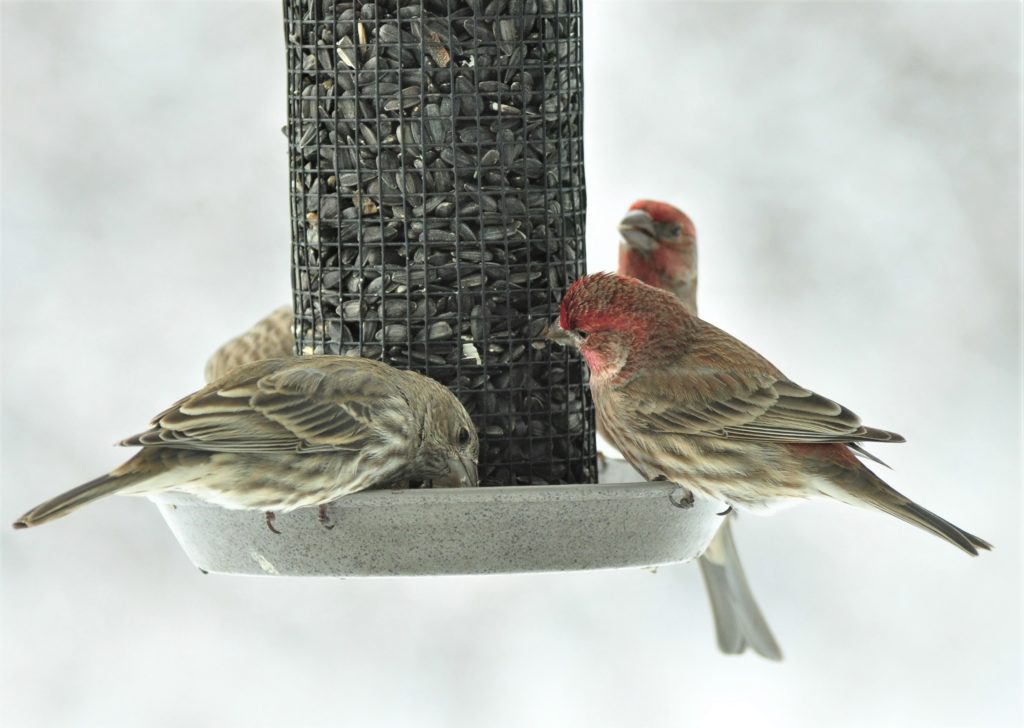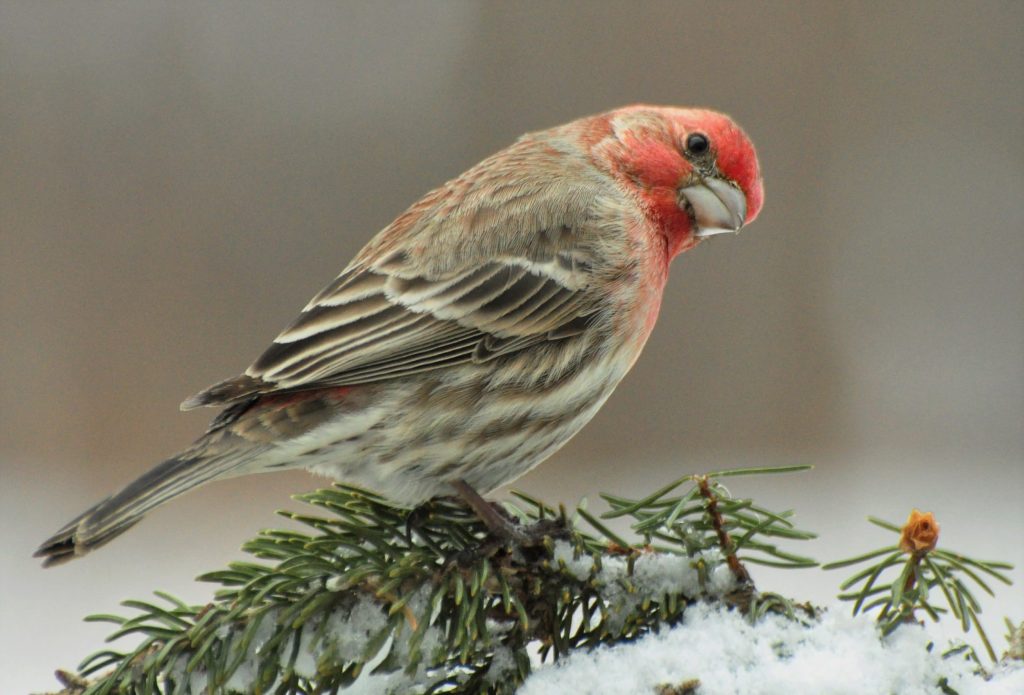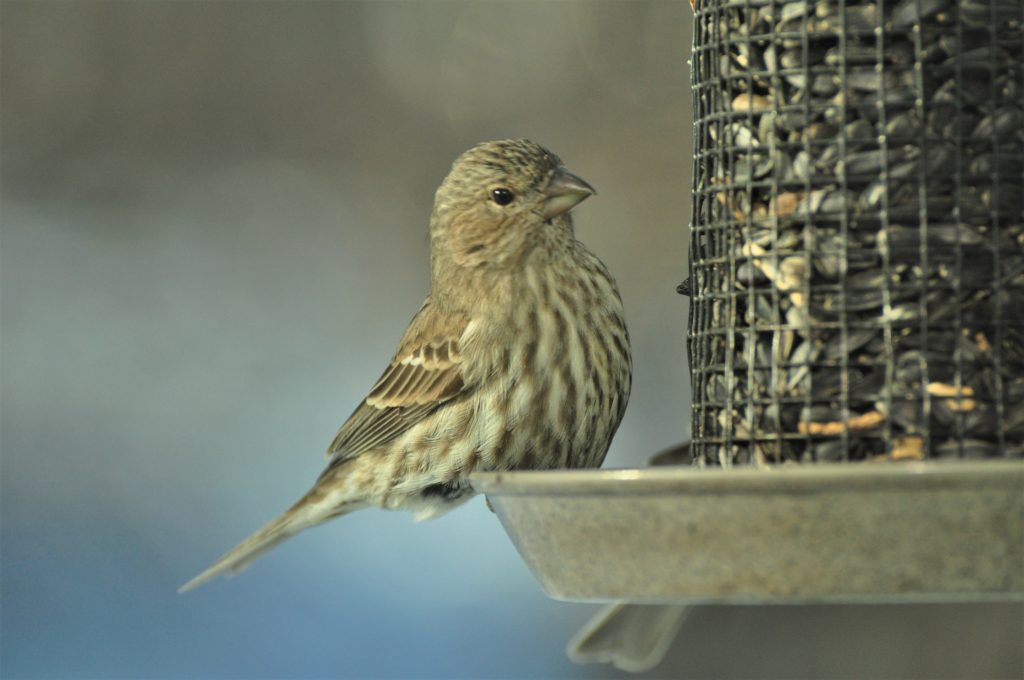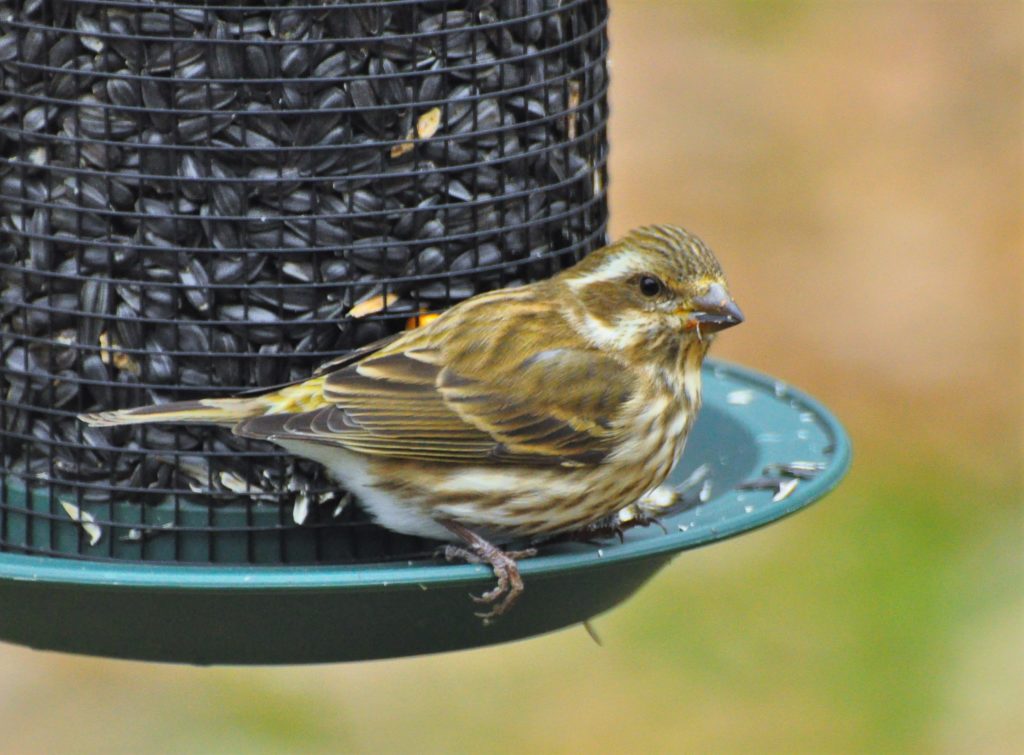Photography courtesy of Lowell Washburn, all rights reserved.
For thousands of Iowa wildlife enthusiasts, winter bird feeding is an increasingly popular winter pastime. The more birds we attract to our feeders, the more fun the activity becomes. Properly identifying those backyard visitors – chickadees, cardinals, jays and others — is generally an easy task.
There are exceptions, of course. Take, for example, those colorful red finches that seem to have become increasingly common during the past several weeks. The birds’ rosy plumage quickly narrows the possibilities to two obvious choices. The bird you’re currently attempting to identify is either a house finch or it is a purple finch. But which one is it?

A native of the southwestern U.S. and Mexico, the house finch – for reasons unknown – began to expand its territory eastward during the 1940s. Meanwhile, an eastern population of house finches was simultaneously established when flocks of cage birds were intentionally released in New York city. As populations thrived, the introduced birds rapidly moved westward. House finches reached in Iowa in 1982, although no one can say with certainty which expanding population arrived here first. What is certain it that, since its initial debut, house finches have become a popular and increasingly common year-round resident.
Occurring in Iowa as a winter migrant, the look alike purple finch hales from the evergreen forests of central and western Canada. Abandoning the northern nesting grounds in fall, the birds scatter across much of the U.S. where they roam about for the remainder of the winter. Both the house and purple finches are seed eaters and the two often mingle at backyard sunflower feeders. Determining one species from the other is understandably confusing to many enthusiasts.
At first glance, house and purple finches may appear identical. And although making the correct identification requires a closer look, the task is not nearly as daunting as some folks assume. In reality, the two species – although quite similar in appearance – are two very different birds. Once you know what to look for, the confusion will vanish, and you’ll have little trouble separating the two again.
Here are the key features that will make identifying “red finches” a piece of cake.
1] Although the males of both species sport splashes of red plumage, the tones bear subtle differences. House finch males have reddish or reddish orange feathering which occurs primarily on the head, chest and rump. House finches have light, buff colored wing bars and brown streaking on the flank.

By contrast, purple finches have a deep raspberry or purplish colored plumage that dominates the head, chest, and back. The wings, wing bars, and flanks also display a warm, purplish wash.

2] Although similar in size, the house finch is slenderer in design and has a longer tail than its northern counterpart. The purple finch is a chunkier bird which makes it appear larger. By comparison, purple finches have a shorter, deeply notched tail.
3] The head of the house finch is rounded and tight feathered. Purple finches have a proportionately larger head, slightly heavier bill, and the crest feathers are often elevated.
4] Identifying female finches is much simpler. Female house finches have nondescript chocolatey brown, streaked plumage. The head is mostly plain with faint streaking.

By contrast, female purple finches are arrayed in a rich combination of creamy, tan, and cinnamon feathering. The head is accented by a bold white stripe above and below the eye.


 Tom Cope
Tom Cope Sue Wilkinson
Sue Wilkinson Susan Judkins Josten
Susan Judkins Josten Rudi Roeslein
Rudi Roeslein Elyssa McFarland
Elyssa McFarland Mark Langgin
Mark Langgin Adam Janke
Adam Janke Joe Henry
Joe Henry Kristin Ashenbrenner
Kristin Ashenbrenner Joe Wilkinson
Joe Wilkinson Dr. Tammy Mildenstein
Dr. Tammy Mildenstein Sean McMahon
Sean McMahon